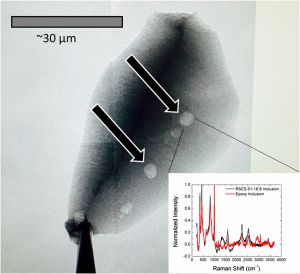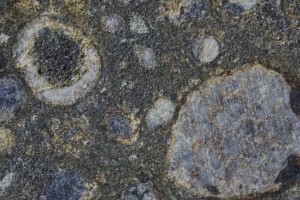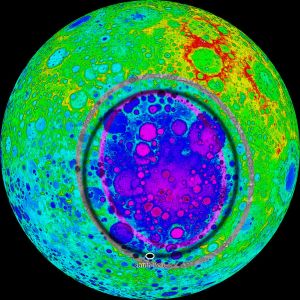Great news!
A spacecraft has found definite signs of life on a habitable world!
Well, it was Earth and the craft was a probe named Galileo that flew past its home in 1990 for an equipment check before sailing on to explore the Solar System as far as Jupiter. (Here’s how that turned out.)
This isn’t from Galileo, but it is definitely cool. In 2020 NASA turned some of its data on Earth into music and released the video. Check out which instrument is “playing” atmosphere, water, etc., at the YouTube page.
Still, congratulations to the rocket scientists!
And even though our focus is on how cats evolved, we do need to look at Earth and ask the basic questions: where did it come from? What makes our planet such a good stage for, and cast member in, that ensemble play we call Life?
Only then will details in later chapters make sense, for instance, why cats have four legs and a long tail (mammal predators do have other options); the whole cat-dog thing and whether T. Rex ate any of their direct ancestors; why cats have pretty fur but scary claws and teeth (compared to our own flat fingernails and chompers), and so forth.
The evolutionary processes — or tools, from a metaphysical standpoint — that have led to all of this are very powerful.

The Galileo probe could never make such a spectacular find: possible traces of 4.1-billion-year-old life, preserved in an Australian zircon crystal. (Image: Figure 1, in Bell et al., PNAS, open access)
They are ancient, too, coming into play soon after the planet’s formation, as we saw in earlier chapters with LUCA (the last universal common ancestor of all life, including those 3.5-billion-year-old fossil cyanobacteria we mentioned that aren’t much different from cyanobacteria living in stromatolites today).
The life these processes shaped over deep time might have branched off at any moment into something totally different.
But it didn’t.
There is this Earth and there are these living beings called Order Carnivora.
How did that happen?
Let’s begin at the beginning, and then carry on the interesting story — part of what experts have managed to piece together and agree on, anyway — through the next few chapters.
Some of this is iffy, but I’ll try to stay as close to the current consensus as possible.
About that consensus…
Unfortunately, the details of Earth’s earliest days aren’t very well known. Evidence from those times is rare in the geological record, and difficult to interpret. (Taylor and McLennan; Zahnle et al.)
As you’ve probably heard, current thinking is that there was a vast cloud of nebulous interstellar dust that collapsed some four and a half billion years ago — around the 4,500-Ma line in our cat/sports field analogy.
This event formed the Solar System and the Sun (which is actually a star).
Scientists agree on that.

Chondrites sometimes also contain carbon. Check out the photographer link for lots more information. (Steve Jurvetson, CC BY 2.0)
The boffins even have some leftover “construction debris” to prove it: chondritic meteorites, chunks of solidified nebular material that were too heavy to be pushed out of the neighborhood by the new Sun’s stellar wind but were too small to grow into planets through gravitational attraction.
Scientists may soon get a chance to watch this happen at another solar system hundreds of light-years away.
There’s a lot of such debris still floating around out there, but it’s mostly out of our reach.
So an insane amount of science has been done on the chondrites that essentially fell into our laps, as well as on the two most accessible relicts of Solar System formation — Earth and the Sun (the Moon formed a little later, as we’ll see in the next section).
This work has been verified and expanded upon with data collected through high-tech ground-based astronomy as well as by space missions to other Solar System bodies over the last half-century or so, all of it processed on incredibly powerful computers.

Spacecraft get spectacular closeups, but there’s a special thrill to standing your back yard, looking into an eyepiece, and seeing our neighbors in real time, just hanging out. This was taken during the Great Conjunction of December 2020, by Steve Fung, CC BY-SA 2.0.
For example, experts now know that brand new giants like Jupiter and Saturn had enough mass, 4.5 billion years ago, to capture some of the solar nebula for their atmospheres and then to hold onto this material — mostly hydrogen, water vapor, methane, and ammonia — as the brightening young Sun blew away the remaining free-floating nebular gas. (Olson and Sharp; Zahnle et al.)
Let’s call this Point A: Consensus on how the Solar System formed.
While everyone is okay with the big picture, scientists from assorted fields obsess and argue over many of its details.

Earth in space: One of the biggest mysteries in the Universe. (Image: 19 Studio/Shutterstock)
Of course they do: that ancient cloud of dust is all there was to work with.
How could something like that turn into Life and our “blue marble”?
Are we unique, or does this sort of thing happen throughout the Universe (and if it does, why haven’t we spotted other life yet)?
Point B is obvious, as the Galileo probe showed in 1990: Earth today, with continents and oceans full of life.
We need to get from Point A to Point B.
It’s quite a challenge. And the trickiest part comes first.
What was early Earth like?
No one really knows. (Zahnle et al.)

Here is another Saturn moon photobombing Cassini’s image of Titan. (Image: NASA/JPL-California Institute of Technology; processing 2di7 & titanio44, CC BY-NC-ND 2.0)
But would you believe that, from space, it probably looked like Saturn’s moon Titan at first?
Yes.
NASA, channeling some Carl Sagan, calls early Earth “an orange dot.” (NASA 2020b; Zahnle et al.)
Maybe it was hazy and yellow, but there’s still controversy over the precise chemical composition of Earth’s young atmosphere and where it came from: The solar nebula, a la Jupiter and Saturn? Volcanic outgassing from deep inside the planet? Impact degassing?
Fortunately, we laypeople can skip it, since Earth v.1.0 didn’t last very long.
Some 30 to 100 million years after the Solar System had formed, a chunk of debris roughly the size of Mars may have struck this planet, tilting its rotation axis and forming the Moon. (Zahnle et al.)
In that case, Earth v.2.0 is the verson that came alive and now is our home, so let’s focus on that.
But take note: there’s a “writer’s bias” alert on the following details.
Earth’s early history is still highly debatable. I’ve chosen to give you the hypothesis offered by Zahnle et al. (see source list).
This isn’t because I think they’re right — I don’t have the background to judge. Rather:
- Few of us have degrees in astroscience, so presenting all sides would be very confusing.
- While heavy in some parts, this highly cited paper is written in straightforward language that a nerdy layperson can follow.
- Zahnle et al. also acknowledge and discuss other points of view.
- They show common sense in emphasizing the giant impact that formed our Moon and restructured the planet we live on. I haven’t seen this distinction drawn in the other major papers I read but like it: Theia seems to have hit Earth’s reset button — hard.
Too, their description of what may have happened on Earth after Theia’s collision is absolutely awesome! (Just remember that there are other ideas out there.)
According to Zahnle et al.:
- Earth still had an atmosphere, but it probably wasn’t yellow any more and you couldn’t breathe it — vaporized silicate minerals, as well as carbon monoxide, carbon dioxide, and other gases, as well as relatively volatile elements like sodium. No water, though; this precious compound was locked up in the planet’s mantle.
- For about a thousand years after the impact, Earth’s weather forecast was “cloudy, with silicate rain” as this extremely hot atmosphere condensed and cooled.
- That mineral rain fell into a global sea of molten rock that covered Earth’s surface for roughly 2 million years. Zahnle et al. note that geothermal heat energy at that point rivaled sunlight!
There is a reason why geologists call this time the Hadean. It truly was hellish.
Cooling happened very slowly. There was a runaway greenhouse effect going on as outgassing from the magma ocean released some water vapor into the atmosphere, which already contained assorted heat-blanketing gases.
- Nevertheless, physics worked the same back then as it does today, and this fiery planet radiated away its heat ever so slowly into the surrounding very cold interplanetary space.
The magma ocean solidified — more on that in the next chapter — and Earth’s mantle “froze” into its current state ever so slowly, from the bottom up. As this happened, mantle rock released the rest of its primordial water stash into the atmosphere through volcanoes.

Artist’s impression of a Venera lander on the high-pressure, high-temperature surface of modern Venus. (Image: Coffee/Pixabay)
My impression is that Earth at this point resembled modern Venus, at least in terms of the runaway greenhouse effect but with steam.
That’s an important point. Venus has very little water in its atmosphere, and it’s an open question whether Venusian volcanoes are outgassing any from that planet’s mantle. (NASA, 2021; O’Callaghan)
- Returning to Hadean Earth, its geothermal heat flow eventually lowered enough to break the runaway greenhouse, per Zahnle et al.
As the planet cooled, atmospheric steam ondensed into rain, and the oceans formed.
Zahnle et al. report that the oceans started out salty because this rain washed such things as sodium and chloride from the air!
Our planet now had a hydrologic cycle, which continues today in a much more complex form.
With water present, Earth could now cycle carbon, though in very simple ways compared to the modern cycle. This certainly would have encouraged Hadean life.
If it existed at that very early point, Life needed all the help it could get.
Per Zahnle et al.:
- There was no ozone layer yet.
- The Sun, although somewhat dimmer than it is today, was putting out much more UV and x-ray radiation than it does today.
- The Late Heavy Bombardment was still underway, with tens of rocky objects coming in that were big enough to partly reset the atmosphere (one such space rock hit the Moon, leaving behind the largest lunar crater, Aitken at the South Pole).

Aitken crater at the lunar South Pole via Wikimedia, CC BY-SA 3.0.
The good news is that Life might have found a sweet spot at the bottom of the sea.
While not much could be done if a huge space rock was headed their way, deep water would shield any Hadean seafloor dwellers from harmful solar and cosmic radiation as well as the severe atmospheric effects of frequent impacts elsewhere on the planet.
Too, there were hydrothermal vents down there, providing nutrients like phosphorus, potassium, and nitrogen, as well as lots of energy to fuel biochemical reactions.
Water, energy, food: all the basic necessities (Lingam and Loeb; NASA, n.d.) were there. When did Life arrive at the banquet?
It’s too bad we don’t know more about those times.
Life on Earth is built from solar nebula material and was first shaped by events that occurred during every moment of the billion years or so between the accretion of Earth v.1.0 and the time, 3.5 billion years ago, when the oldest known fossils were laid down on the current Earth — blue-green algae, also known as cyanobacteria.
Well, it probably would be a headache, knowing that much detail.
Let’s just be glad that we’ve now reached the point in our series where some Earth systems — an atmosphere, and the hydrologic and carbon cycles — are up and running.
But does it really matter?
- Titan, Mars, and Venus have respectable atmospheres.
- Organic (carbon-bearing) molecules are not uncommon in the Solar System, though none has yet shown the complexity and functioning of living cells.
- Titan has a “hydrologic” cycle, although it runs on methane instead of water.
- Mars had oodles of water in the past and might still have some hidden underground.
- Icy moons Europa and Enceladus have very deep, briny water oceans concealed under their frozen shells.
Right. These are the reasons why we are so interested in those worlds.
Earth, however, has something else going on (besides Life) that none of those worlds has, to the best of our knowledge.
That matters a lot!
This unique feature, and its effects on Life, are covered in the next chapter.
Featured image: slowmotiongli/Shutterstock
Sources:
Bell, E. A.; Boehnke, P.; Harrison, T. M.; and Mao, W. L. 2015. Potentially biogenic carbon preserved in a 4.1 billion-year-old zircon. Proceedings of the National Academy of Sciences, 112(47): 14518-14521.
Dunham, W. 2020. Potential sign of alien life detected on inhospitable Venus. https://www.reuters.com/article/space-exploration-venus-int/potential-sign-of-alien-life-detected-on-inhospitable-venus-idUSKBN2652GI Last accessed July 12, 2021.
Gradstein, F. M.; Ogg, J. G.; and Hilgen, F. G. 2012. On the geologic time scale. Newsletters on Stratigraphy. 45(2):171-188.
Guttenberg, N.; Virgo, N.; Chandru, K.; Scharf, C.; and Mamajanov, I. 2017. Bulk measurements of messy chemistries are needed for a theory of the origins of life. Philosophical Transactions of the Royal Society A: Mathematical, Physical and Engineering Sciences, 375(2109), 20160347.
https://royalsocietypublishing.org/doi/full/10.1098/rsta.2016.0347
Guttenberg, N.; Chen, H.; Mochizuki, T.; and Cleaves, H. J. 2021. Classification of the Biogenicity of Complex Organic Mixtures for the Detection of Extraterrestrial Life. Life, 11(3): 234.
Hazen, R. M. 2017. Chance, necessity and the origins of life: a physical sciences perspective. Philosophical Transactions of the Royal Society A: Mathematical, Physical and Engineering Sciences, 375(2109): 20160353. https://royalsocietypublishing.org/doi/full/10.1098/rsta.2016.0353
Johnson, S. S.; Anslyn, E. V.; Graham, H. V.; Mahaffy, P. R.; and Ellington, A. D. 2018. Fingerprinting non-terran biosignatures. Astrobiology, 18(7): 915-922.
Lingam, M., and Loeb, A. 2018. Is extraterrestrial life suppressed on subsurface ocean worlds due to the paucity of bioessential elements?. The Astronomical Journal, 156(4): 151.
https://iopscience.iop.org/article/10.3847/1538-3881/aada02
Moczydłowska, M. 2008. The Ediacaran microbiota and the survival of Snowball Earth conditions. Precambrian Research, 167(1-2): 1-15.
Morton, M. C. 2017. When and how did plate tectonics begin on Earth? https://www.earthmagazine.org/article/when-and-how-did-plate-tectonics-begin-earth/
NASA. 2020a. Can we find life? https://exoplanets.nasa.gov/search-for-life/can-we-find-life/ Last accessed July 12, 2021.
___. 2020b. Life in our Solar System? Meet the neighbors. https://exoplanets.nasa.gov/news/1665/life-in-our-solar-system-meet-the-neighbors/ Last accessed July 12, 2021.
___. 2021. NASA selects 2 missions to study “lost habitable” world of Venus. https://www.nasa.gov/press-release/nasa-selects-2-missions-to-study-lost-habitable-world-of-venus Last accessed July 12, 2021.
___. 2021a. Then there were 3: NASA to collaborate on ESA’s new Venus mission. https://www.nasa.gov/feature/then-there-were-3-nasa-to-collaborate-on-esa-s-new-venus-mission Last accessed July 12, 2021.
___. 2021b. Venus overview. https://solarsystem.nasa.gov/planets/venus/overview/ Last accessed July 12, 2021.
___. 2021c. The searchers: How will NASA look for signs of life beyond Earth? https://exoplanets.nasa.gov/news/1681/the-searchers-how-will-nasa-look-for-signs-of-life-beyond-earth/ Last accessed July 12, 2021.
__. 2021d. Life in the universe: What are the odds? https://exoplanets.nasa.gov/news/1675/life-in-the-universe-what-are-the-odds/ Last accessed July 12, 2021.
___. 2021f. What’s out there? The exoplanet sky so far? https://exoplanets.nasa.gov/news/1673/whats-out-there-the-exoplanet-sky-so-far/ Last accessed July 12, 2021.
___. 2021e. Mars 2020 Perseverance rover. https://mars.nasa.gov/mars-exploration/missions/mars2020/ Last accessed July 12, 2021.
___. n.d. Europa Clipper: Ingredients for life. https://europa.nasa.gov/why-europa/ingr.edients-for-life/ Last accessed July 12, 2021
O’Callaghan, J. 2020. Life on Venus? Scientists hunt for the truth. https://www.nature.com/articles/d41586-020-02785-5
Last accessed July 12, 2021.
Olson, P. L., and Sharp, Z. D. 2019. Nebular atmosphere to magma ocean: a model for volatile capture during Earth accretion. Physics of the Earth and Planetary Interiors, 294: 106294.
Oppenheimer, C. 2011. Eruptions That Shook the World. Cambridge: Cambridge University Press. Retrieved from https://play.google.com/store/books/details?id=qW1UNwhuhnUC
Prothero, D. R. 2006. After the Dinosaurs: The Age of Mammals. Bloomington and Indianapolis: Indiana University Press. Retrieved from https://play.google.com/store/books/details?id=Qh82IW-HHWAC
Stern, R. J., and Miller, N. R. 2021. Neoproterozoic Glaciation—Snowball Earth Hypothesis. Encyclopedia of Geology, 546-556. https://www.researchgate.net/profile/Bob-Stern/publication/337557048_Neoproterozoic_Glaciation-Snowball_Earth_Hypothesis/links/5de2eefc4585159aa4578ecb/Neoproterozoic-Glaciation-Snowball-Earth-Hypothesis.pdf (PDF download)
Taylor, S. R., and McLennan, S. M. 1995. The geochemical evolution of the continental crust. Reviews of Geophysics, 33(2): 241-265.
Wikipedia. 2021. History of the Earth. https://en.m.wikipedia.org/wiki/History_of_Earth Last accessed July 23, 2021.
Witze, A. 2021. Life on Venus claim faces strongest challenge yet. https://www.nature.com/articles/d41586-021-00249-y Last accessed July 12, 2021.
Zahnle, K.; Schaefer, L.; and Fegley, B. 2010. Earth’s earliest atmospheres. Cold Spring Harbor perspectives in biology, 2(10), a004895. http://cshperspectives.cshlp.org/content/2/10/a004895.long
3 thoughts on “Main Character: Earth”